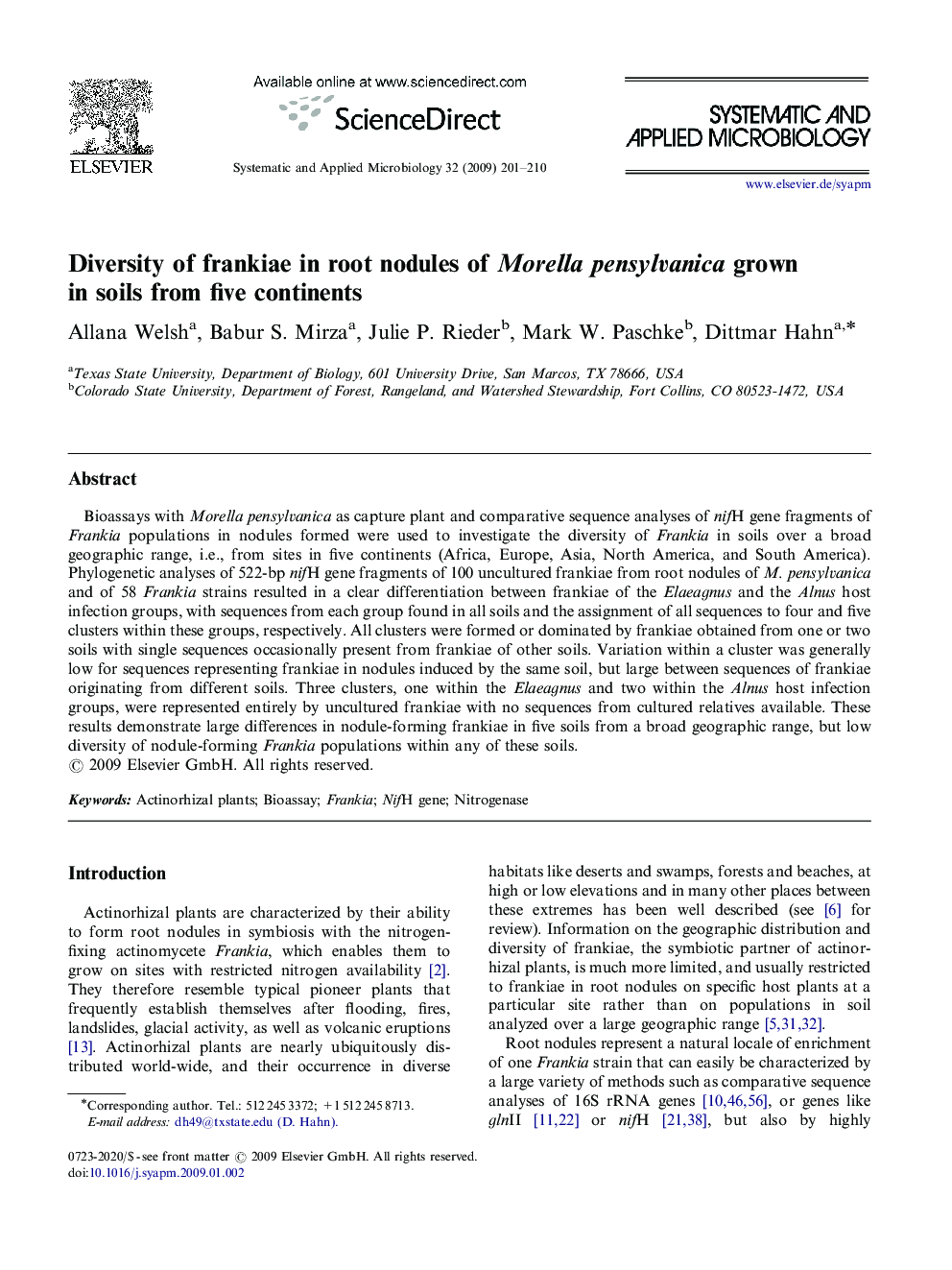| Article ID | Journal | Published Year | Pages | File Type |
|---|---|---|---|---|
| 2063587 | Systematic and Applied Microbiology | 2009 | 10 Pages |
Bioassays with Morella pensylvanica as capture plant and comparative sequence analyses of nifH gene fragments of Frankia populations in nodules formed were used to investigate the diversity of Frankia in soils over a broad geographic range, i.e., from sites in five continents (Africa, Europe, Asia, North America, and South America). Phylogenetic analyses of 522-bp nifH gene fragments of 100 uncultured frankiae from root nodules of M. pensylvanica and of 58 Frankia strains resulted in a clear differentiation between frankiae of the Elaeagnus and the Alnus host infection groups, with sequences from each group found in all soils and the assignment of all sequences to four and five clusters within these groups, respectively. All clusters were formed or dominated by frankiae obtained from one or two soils with single sequences occasionally present from frankiae of other soils. Variation within a cluster was generally low for sequences representing frankiae in nodules induced by the same soil, but large between sequences of frankiae originating from different soils. Three clusters, one within the Elaeagnus and two within the Alnus host infection groups, were represented entirely by uncultured frankiae with no sequences from cultured relatives available. These results demonstrate large differences in nodule-forming frankiae in five soils from a broad geographic range, but low diversity of nodule-forming Frankia populations within any of these soils.
